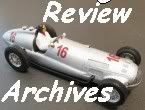.
Pioneer lightweight ’67 Camaro Z28 Trans Am
Sebring 12 hour 1968
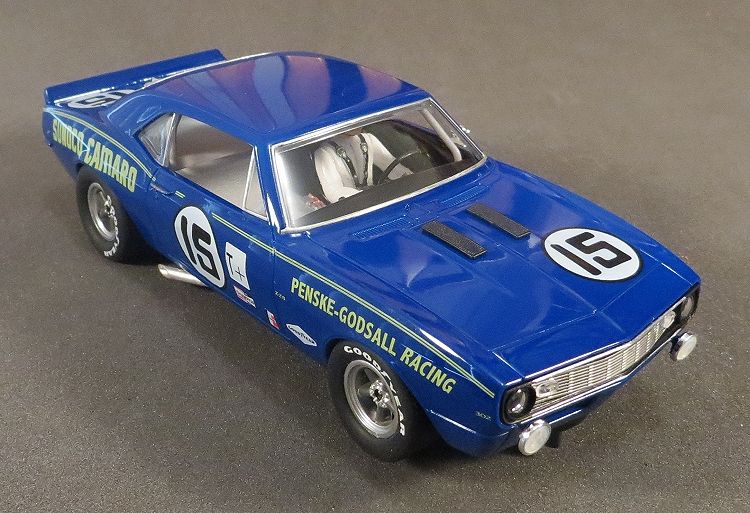
Now if there was anything that made the over fifties muscle men go weak at the knees it has to be a blue Camaro, especially one associated with that legendary name Mark Donohue! And this model is just that, so that puts it in the sell out category to start with!. But what else about it should make it fly off the online shelves. Well, for one, it would have to be the Pioneer brand name! But is it all that it should live up to be. For the uninformed and those who have recently come in to 1/32 RTR slot cars you may be excused for not having heard of Pioneer before now.
Pioneer Slotcars
Pioneer have certainly made a popular choice but this model looks to be a replica of the restored car, not the MD . Not a big deal and the only observation I would make is that the blue of the body colour bleeds through the yellow tampo of the text along the side of the model. It would have been nicer and more striking if this could have been overcome. The splitter under the front valance also appears to be missing.
Sunoco Camaro history
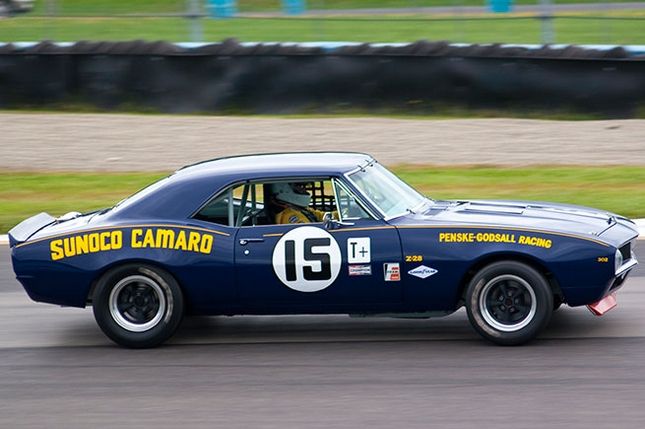
If my memory serves me correctly, Pioneer came into this world some time in 2009 after a much awaited and debated time. It was to be the new messiah of Trans Am models and as such we all had to bow down to the great god Pioneer when it came to Trans Ams. Success at the race track was legendary and the chant Scaley is dead, long live the king! was heard around many slot circuits nation wide. But what was the phenomenon, for phenomenon it was! I suspect the hype whipped up on far a across the world was part to blame, but another factor was that if seven out of ten Trans Ams on the start line were Pioneer, then they had the weight of numbers to feature on the podium, I know that was the reason in Sunny Queensland!
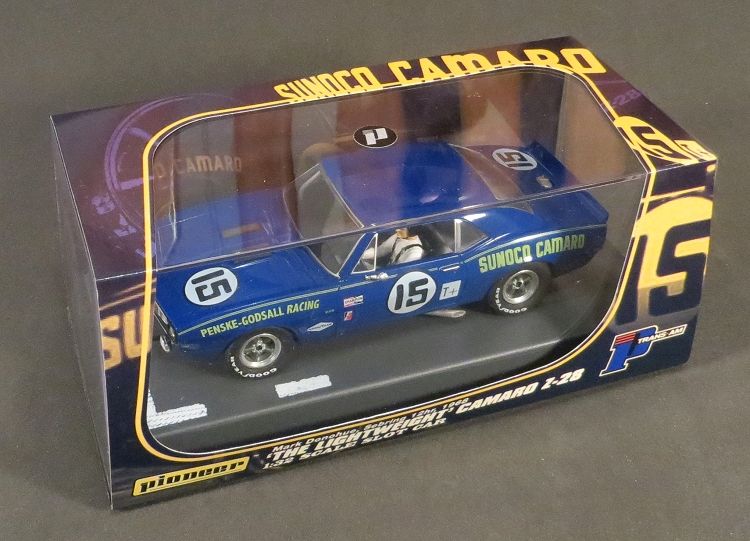
It was a case of all smoke and mirrors, and now the smoke has dispersed and the mirrors have faded, the facts can be told. The Pioneer models run a 3:1 final drive whereas the Scaley models run at 3.27:1, not a big difference, but measurable on club tracks with longer straights. The tyres too have a larger rolling radius which effectively ups the gearing. Another advantage was the traction magnet; on the latest Camaro’s the magnet is 2.5 m.m. thick and sticky to boot while the Scaley models have 2.00 m.m. and less. There was also some debate as to the performance of the Pioneer motor compared to the Scaley; this also has proved to be a myth with there being no conclusive evidence outside of batch variances.
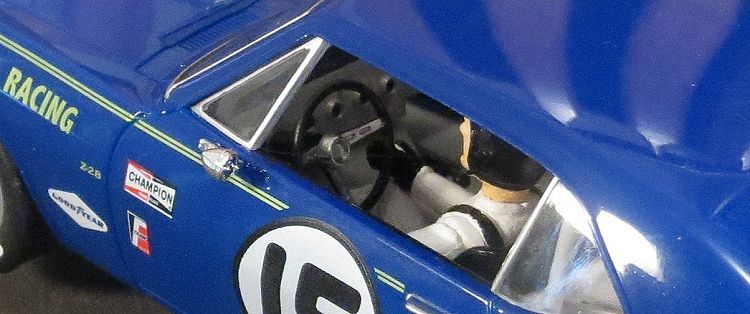
Up here in the Sunshine State some of us have up-spec’ed our Scaley Mustangs to Pioneer standards and have shown that the Scaley model is still the equal of any in the 18,000 motor range. Our last outing at Four Seasons raceway saw two Scaley Mustangs finish first and second only seconds apart and more than a minute in front of third place in a fifteen minute race; and everything else including the Pioneers were also-rans. Far be it for me to be a ‘knocker’ though, I still love these Pioneers and wanted to dispel once and for all, the myths surrounding them. In the words of Monty Python, they are not the Messiah, they’re just another slotcar!
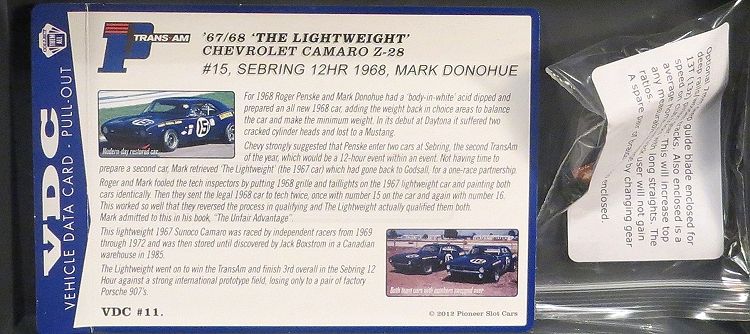
Pioneer were ly produced in China, but a year or two and several models into the venture saw the company withdraw their tooling due to ongoing and persistent quality issues. After a deal of time, the company has set up business back in the UK where they have more control over their product. Indeed, the box sleeve declares the product to be made in England. Possibly the only main stream manufacturer currently to do so. I give them 10/10 for their courage! So let’s now be constructive and search out the good and bad points of this model; and there is plenty of good to find.
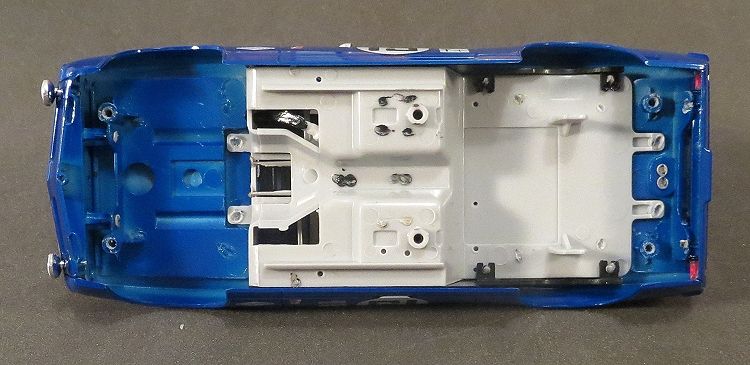
First up as already mentioned, the links are the real deal. A great livery almost as instantly noticeable as the Gulf livery of the same era; and the attachment to Mark Donohue also increases its kudos. Modeling accuracy these days is a forgone, and with slotcar makers’ having access to CAD drawings, inevitably they will always look good. The model comes well packed and there is a little bit of informative narrative on the box sleeve just to fill in a bit of background for the real car plus the models dimensions. Underneath the box is a little ‘value added’ package containing a 7.0 m.m. deep guide for board track racing, a 13z pinion for club tracks and a spare pair of braids, although I’m not too happy with the model’s braids, they are a bit too stiff for my tastes.
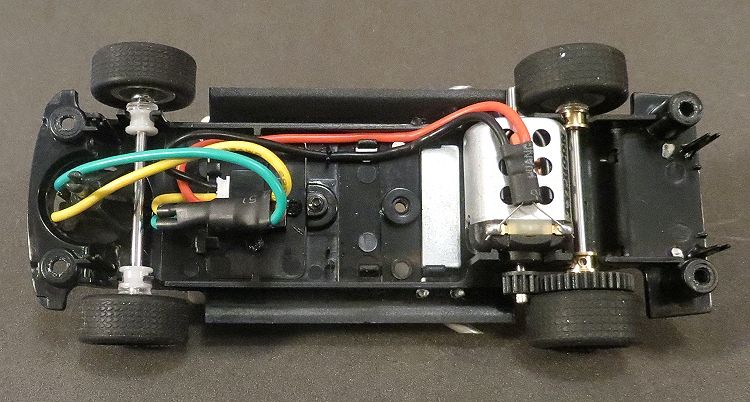
The body is finished well and has a good shine as models should, and the tampo is quite crisp. Only a couple of ‘vulnerables’ too. The driving lights at the front could well be an early statistic in its racing career, along with the side pipe and anodized door mirror. Once again looking underneath, a casual glance would see you being forgiven for thinking it’s a Scaley, right down to the DPR panel! There are positions for six body mounting screws but Pioneer have opted just to use the front and back fixings for this model. An observation would be that if you are a plastic track racer and like to run your body’s loose, you may just need to trim up the edges of the chassis as it is a good fit in the body.
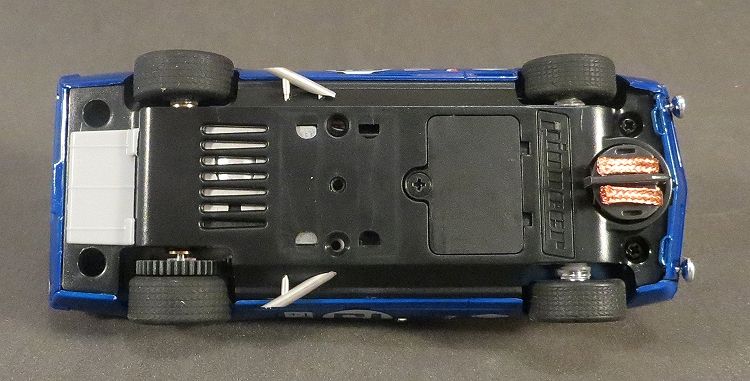
Also underneath I was drawn to the guide. On earlier models I thought it was notorious. Not only did it pull well out of the model, it had an excess of side and end play. Happily this model is an improvement but is still not perfect. The guide functions well all the time the model is on four wheels and stuck down, but a ten tenths situation could see it deslot annoyingly do to lack of purchase in the slot. I would be inclined to fit the deeper guide from the outset as there is only the old Scaley plexitrac and the SCX track that have a shallow slot. Braid changing is easy too with Pioneer opting for quick change braids similar in ways to Monogram’s.
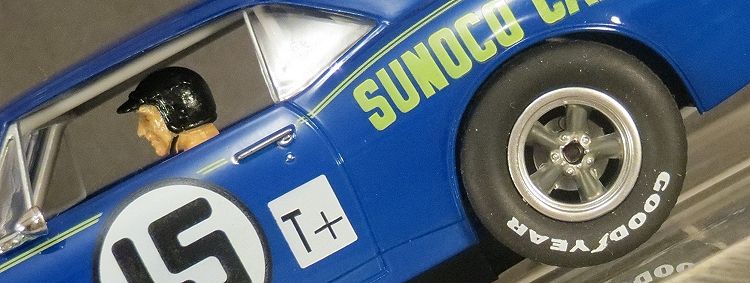
Wheels and tyres are pleasantly concentric and as mentioned before, there is plenty of meat on the tyres; so I assume the rear tyre tread will be the first thing to go on the tyre truer. The ‘Goodyear’ tampo also looks fairly robust and assuming the tyres aren’t immediately swapped for MJK’s or other urethanes, I would say it will be around for some time. I would leave the tread on the fronts as this will help the tyre sideslip in corners and reduce the drag required by this sort of front end set up. The wheels look good too, an excellent representation of the five spoked classic ‘torque thrust’ specials.

For the collector we get a modest interior and along with all the other major manufacturers, Pioneer have endeavoured to add accurate detail to this little viewed region of the model. One thing that is noticeably above par is the detail Pioneer have gone to with the steering wheel!! But these are all incidentals, the avid racer will want to know what is happening at the business end of the model, but I don’t have much news here I’m afraid. The model is same old same old, and in all honesty, nothing more is needed as this ‘same old’ is doing the job admirably, so why change a successful formula?.........
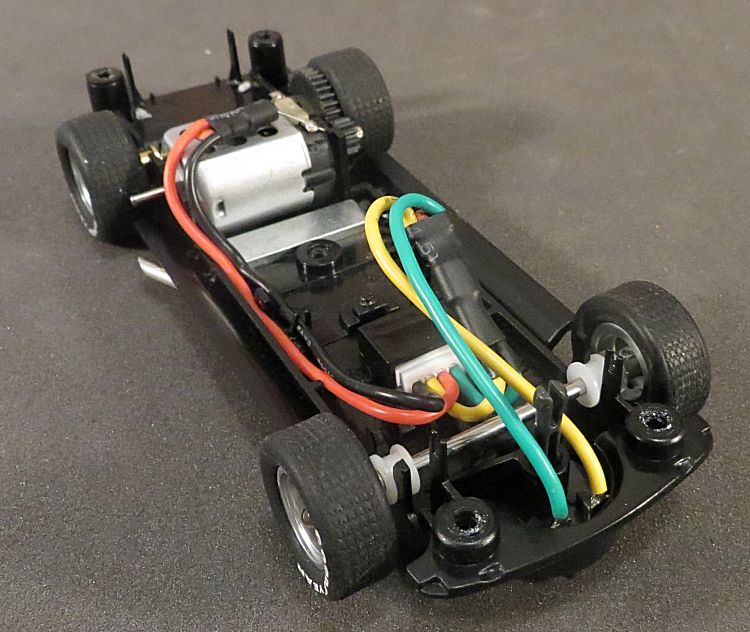
The chassis is very Scaley at a glance; I suppose the traction magnet and the DPR wiring create this impression! The chassis is very rigid and axles are quite firm. The motor, too, is well fixed and all in all a tight assembly. A choice is given for the traction magnet position but I expect that unless you are racing sweeping six laners the magnet will reside in the position immediately in front of the motor. There is no option to fit the magnet under the rear axle though, which is not a huge loss. Other strange detail mentioned in previous reviews is what looks to be a facility to mount some kind of light board front and rear, but to my knowledge Pioneer have yet to release a model with lights??
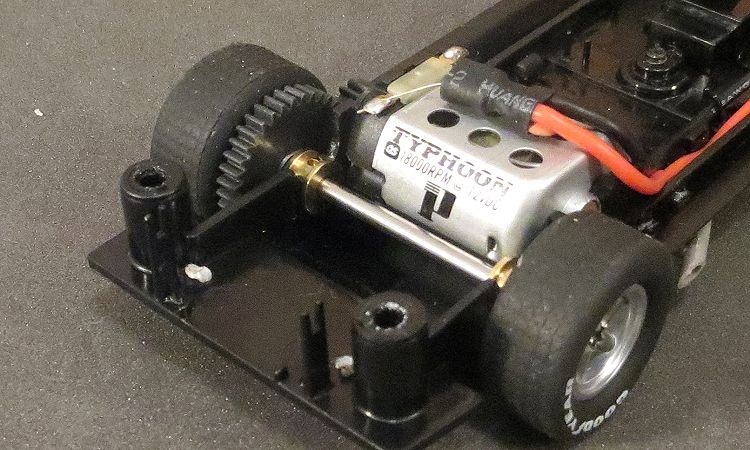
The front axle has had some thought applied to it. It runs in dedicated nylon bushes and Pioneer have gone to the lengths of shimming its endfloat to a minimum. The rear axle is also snug in its mounts, which are cross drilled brass bushes. An observation here is that it seems very easy to rotate the rear axle, as if there was not much drag from the motor? When I reassembled the body I noticed the motor revs dropped perceptibly with the body screws tight, there may well be some stress set up in the drive train with the screws tight and work to relieve this may be necessary, to the point of running the model with the body screws backed off half a turn. Scraping the edge of the chassis where it is in hard contact with the body may also help to relieve it too.
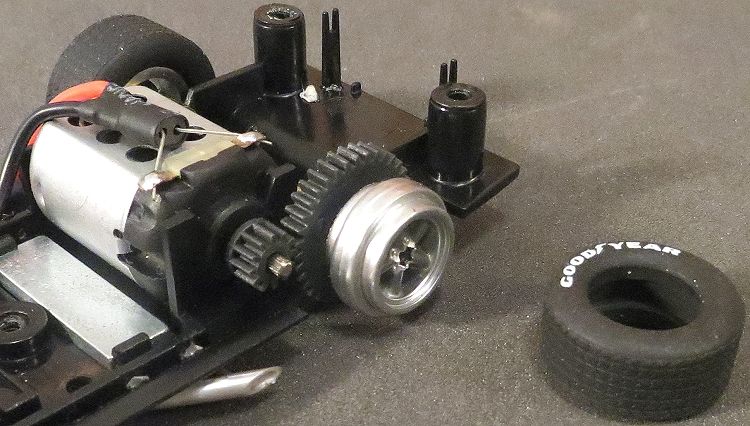
Wheels and tyres are very concentric and the inner step on the wheel is quite deep. Gears are made of a grey composite which is quiet in operation and look very durable, and as mentioned before, final reduction is set at set at 3:1 drive ration. Slotcar modeling has come a long way since the sixties and thankfully manufacturers like Pioneer have acknowledged and used all the tried and tested manufacturing features to ensure what we take from the box is what they planned for us, unlike models from the sixties and seventies which were often less than ready to race!
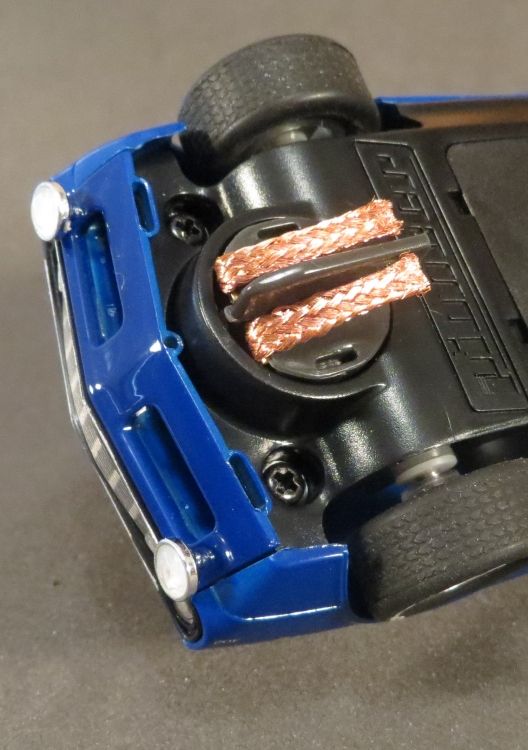
I took this model for its first spin on the now very popular Carrera surface which I must add, that even though I had done no pre test preparation, it behaved impeccably straight from the box. After more than several laps of the Four Seasons Eagleby circuit (Features, this forum) it was evident that the model was a potential race winner. It wasn’t until I really got up it that the rear end started to twitch and to eventually let go in an oversteer deslot. No doubt a tyre change would improve this, and even truing the s would make a substantial difference. The huge traction magnet has its role to play and there are no worries in this department.
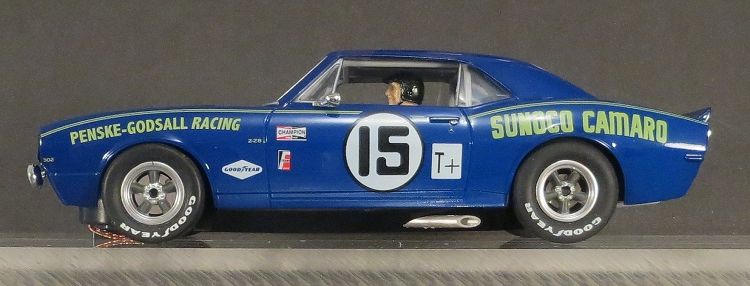
An observation I would make is that on the track in full flight the model runs well, except for the engine braking ?? I first suspected this when checking the rear axle movement but gave it no more thought. There are a couple of possible reasons for this but I haven’t proved either. It could be that there is a lower magnetic flux density from the motor magnets, this could be induced by having such a strong traction magnet so close to the motor, or it could be the combination of a lower gear ratio and larger tyre diameter? Mmmmmmmmmmm?

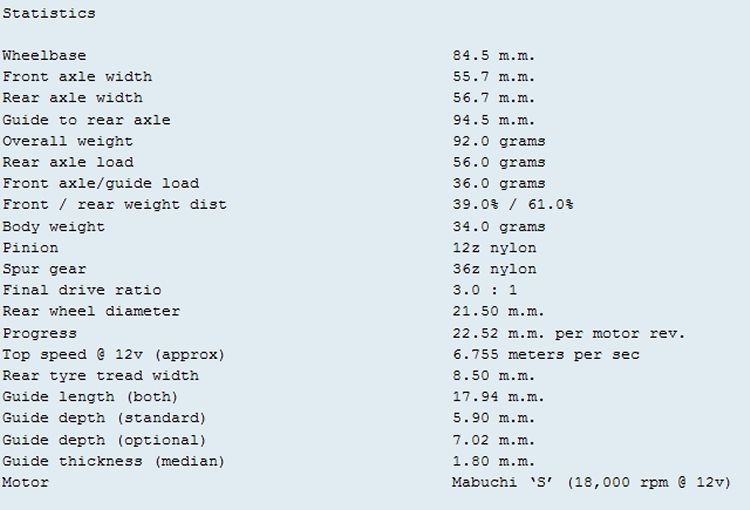
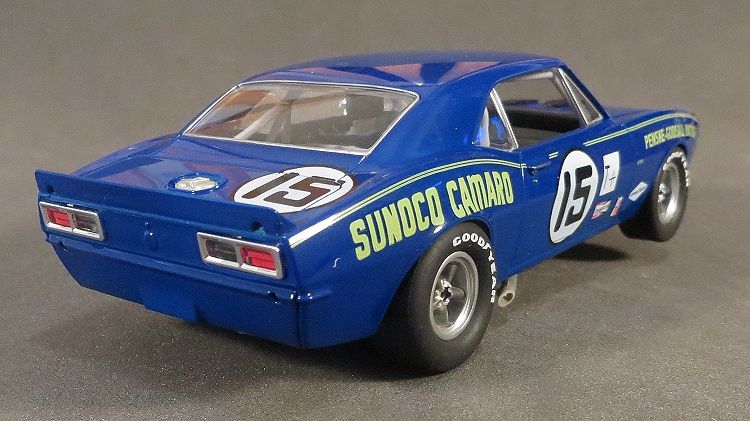
So another great model from Pioneer but not a supercar as such. If you are a home racer this should provide many ‘stuck down’ hours of fun, and if you are a garage racer it will prove to be worth the extra you may have paid for it. Club racing is a different story and you may need to invest as much as the purchase price again to keep up with all those dubious models that seem so hard to beat!
Many thanks to fellow South East Queensland racer Mike O’Leary for the opportunity to review this model.

















